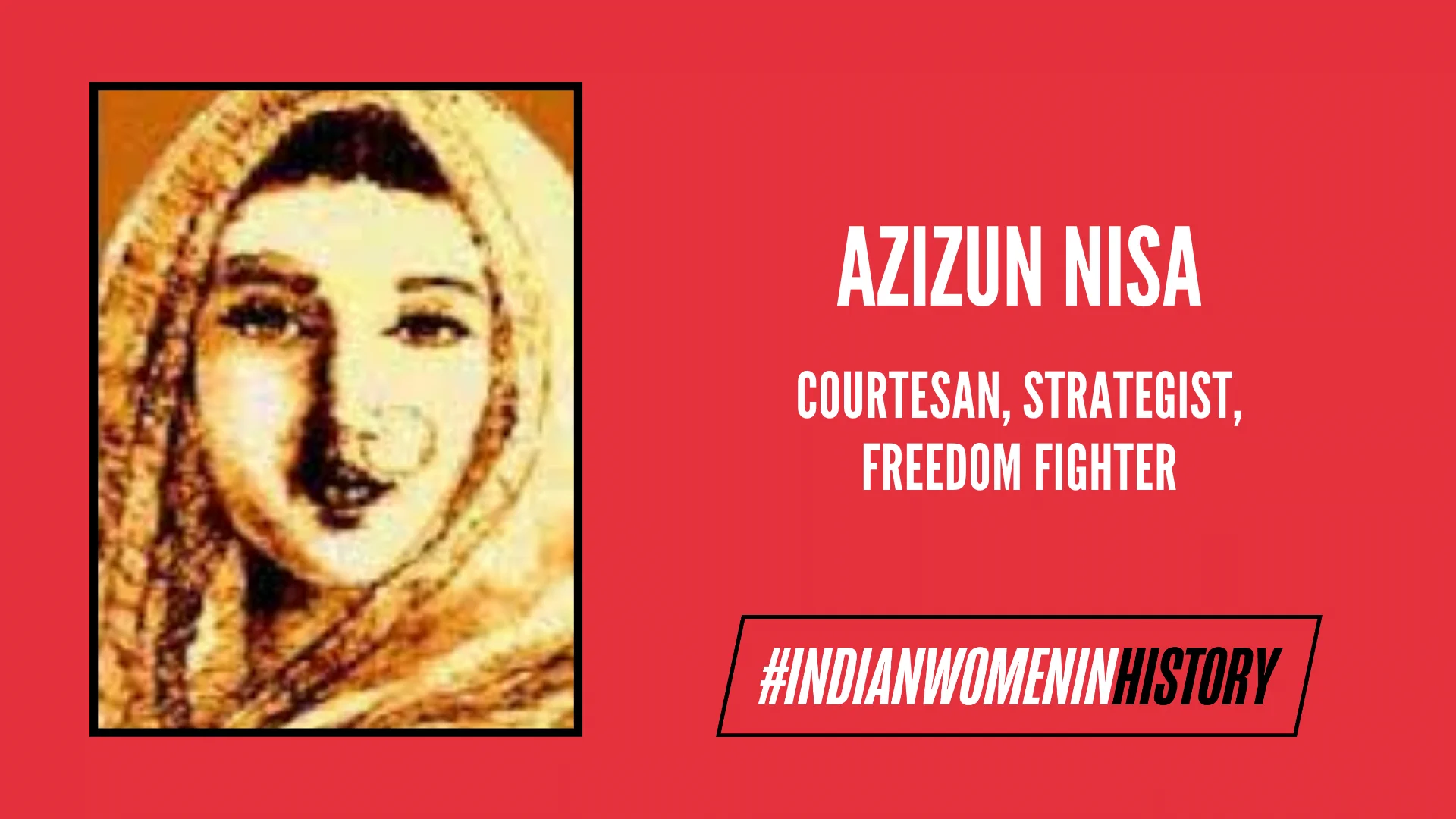Kanpur was among the cities that became a battlefield during India’s First War of Independence in 1857. When the Britishers came knocking, they were met with a fierce retaliation by the Indian forces led by Rani Lakshmi Bai, Tatya Tope, and Nana Saheb. However, lesser-known are the contributions of a courtesan, Azizun Nisa. She donned the mantle of a facilitator and warrior for her home country during the decisive Siege of Cawnpore.

Azizun Nisa: An important presence at the revolt of 1857
The annals of history report that Azizun Nisa, also known as Azizun Bai, was born in Lucknow. Nonetheless, she lived her life in Kanpur – the city where she was professionally active as a courtesan. Her life is a list of decisions that hold testimony to the fact that she was a skilled strategist.
Azizun had a very famous and public love affair with Shamsuddin Sawar of the 42nd Cavalry. This is what seems to have instigated her involvement in the Revolt of 1857. Tripurari Sharma, a playwright with affiliations to the National School of Drama, has penned down ‘Azizun Nisa San Sattavan Ka Kissa‘ and immortalised her through art. She is said to have spied for the native rebels against the British and helped pass on important information that aided in the 1857 rebellion.
The story of Azizun Nisa is only one example that highlights this marginalised narrative. The intensity of their involvement was so high that after quelling the revolt, the foreign power centers targeted them. Apart from confiscating their property, the puritan idea of a ‘good wife‘ versus a ‘the prostitute‘ was pushed to the forefront to malign the reputation of courtesans and those who associated with them

It is noted that the Indian freedom fighters often used Azizun Nisa’s place of residence for holding clandestine meeting sessions among themselves. Apart from collecting and distributing arms and ammunition to these soldiers, she is believed to have trained women to fight.
However, her most important participation was during the Siege of Cawnpore, a key episode on the Indian revolt of 1857. Azizun Bai had established her headquarters in one of the gun batteries which was firing at the British troops. She stayed put with the soldiers and when the need arose, rode into the battlefield armed with pistols.
Also read: Courtesan Contribution To Hindustani Classical Music —Lesser Told Histories
Courtesans: Powerful women marginalised by moral narratives
Majorly seen as non-combatants, courtesans have unfortunately been marginalised by the dominant narrative of the Indian Independence Movement. They played a very important role in financing and strategising against the Britishers for they were women with freedom and the means to do so.
The story of Azizun Nisa is only one example that highlights this marginalised narrative. The intensity of their involvement was so high that after quelling the revolt, the foreign power centers targeted them. Apart from confiscating their property, the puritan idea of a ‘good wife‘ versus a ‘the prostitute‘ was pushed to the forefront to malign the reputation of courtesans and those who associated with them.
Azizun Nisa is believed to have survived the Siege of Cawnpore and was taken as a prisoner by the Britishers. They accused Azizun Nisa to be one of the main conspirators of the revolt and wanted her to confess. But, her courage matched the beauty of her spirit for she never yielded to their demands
The courtesans who were then referred to as ‘Tawaifs‘, were positioned in moralistic, critical light so as to strip them off their social standing. In the time is Azizun Nisa, “tawaif” had altogether a different meaning from that of the present day. Only privileged women could turn Tawaif, that too, after meticulous training in the classical ragas, classical dances, and proper training in musical instruments.
They were respected connoisseurs of the performing arts and literature. Some were Urdu and Persian poets.

The concept of ‘respect‘ was weaved into the narrative around courtesans, implying that they do not deserve it. The intention was to avoid any further revolts being funded and supported by these powerful women. In other words, the assertive advent of Britishers marked the erosion of the cultural, political, and economic power held by courtesans.
Azizun Nisa is believed to have survived the Siege of Cawnpore and was taken as a prisoner by the Britishers. They accused Azizun Nisa to be one of the main conspirators of the revolt and wanted her to confess. But, her courage matched the beauty of her spirit for she never yielded to their demands.
A few quasi-historical sources about Aziz un-Nisa, like the diary of Nanak Chand, the accounts of Colonel William and the official records of Sir Hugh Wheeler mention her trial, but they do not confirm her execution. Honouring Azizun Bai’s indomitable spirit lies in recognising the legacy of marginalised freedom fighters, and learning how women-centric historic re-telling can help uncover similar narratives.
Also read: How ‘The Last Courtesan Of Bombay’ Destigmatises Tawaifs And Mujras
References:
Visibilising the ‘Other’ in History: Courtesans and the Revolt by Lata Singh (2007)
About the author(s)
Sugandhaa's major areas of interest are aesthetics and feminism. She loves engaging with historical fiction - when she isn't reading it, she is daydreaming about it!





